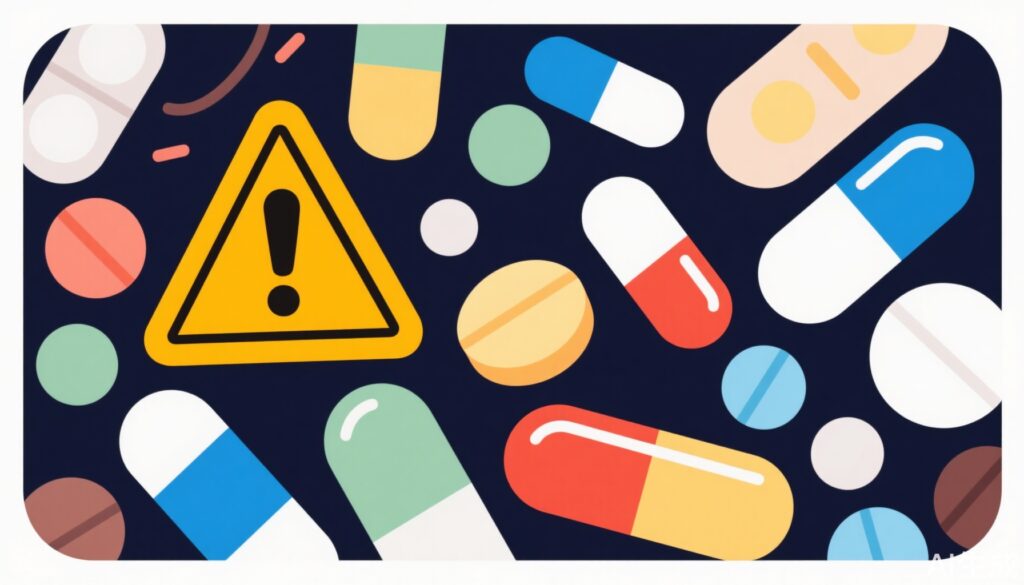Introduction
Medications come in various forms and formulations designed to optimize their effectiveness and minimize side effects. Some pills are specially coated or formulated to release their active ingredients slowly or in specific parts of the digestive system. Altering these medications by splitting, crushing, or chewing can significantly reduce their efficacy and even lead to serious health risks. This article explains six types of medications that should never be split or crushed and why maintaining their integrity is crucial.
1. Enteric-Coated Tablets
Enteric-coated tablets have a specialized coating that protects the medication as it passes through the acidic environment of the stomach, allowing it to dissolve only in the more neutral pH of the intestines. This prevents stomach irritation and ensures proper absorption.
If these tablets are split or crushed, the drug is prematurely released in the stomach, which can irritate the stomach lining, causing pain or even bleeding. For example, enteric-coated aspirin tablets lose their protective coating if broken, greatly increasing the risk of stomach ulcers.
2. Extended-Release Tablets
Extended-release (ER) tablets are manufactured to release medication slowly over time, maintaining steady drug levels in the bloodstream. Breaking these tablets disrupts this controlled release, causing a sudden surge of the drug.
This sudden release can lead to dangerous side effects like a sudden drop in blood pressure or irregular heart rhythms. For instance, splitting extended-release nifedipine tablets used for hypertension can cause dizziness, fainting, and in severe cases, shock.
3. Controlled-Release Tablets
Controlled-release tablets are even more precisely engineered than extended-release formulations to regulate the timing and dosage of drug release.
Splitting these tablets destroys the release mechanism, leading either to insufficient drug availability or an overdose within a short period. For example, breaking controlled-release oxycodone tablets can cause serious respiratory depression and other severe adverse effects.
4. Film-Coated Tablets
Film-coated tablets have a thin outer layer that improves taste and protects the active ingredients from degradation by stomach acid.
Breaking these tablets exposes the medication directly to the esophagus or stomach, which may cause irritation such as esophagitis or ulcers. For example, breaking domperidone tablets (used to treat gastrointestinal issues) can lead to a bitter taste that irritates the throat and may reduce the drug’s effectiveness.
5. Sublingual Tablets
Sublingual tablets are designed to dissolve quickly under the tongue for rapid absorption directly into the bloodstream, bypassing the digestive system.
If these tablets are swallowed whole or split and then swallowed, the medication is destroyed by stomach acid, losing its fast-acting effect. For instance, nitroglycerin tablets used in angina must be taken sublingually; swallowing them delays treatment and can have serious consequences.
6. Targeted Cancer Therapies
Targeted cancer drugs often have complex molecular structures that require the tablet to remain intact for proper delivery to cancer cells.
Splitting these tablets may alter their chemical structure, reducing effectiveness and increasing the risk of severe toxic reactions. For example, erlotinib, a targeted therapy for lung cancer, can cause serious skin toxicity or interstitial lung disease if its tablet form is compromised.
Conclusion
Taking medications exactly as prescribed, including adhering to instructions about not splitting or crushing tablets, is vital for treatment success and patient safety. If a patient has difficulty swallowing pills, they should consult their healthcare provider or pharmacist to explore alternative formulations or administration methods rather than altering the medication themselves.
Understanding these six types of medications—enteric-coated, extended-release, controlled-release, film-coated, sublingual, and targeted cancer therapies—helps prevent accidental harm and ensures optimal therapeutic outcomes.



